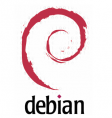
So you want to create a customized LiveCD from your already setup Linux installation or Virtual Machine (VM)? Easy task right? The answer is between yes and no - there are tools that work bugfree, tools that used to work and tools that work for simple LiveCD creation.
A few of the requirements I had for a LiveCD were:
- Created from a relatively complex and fully configured system
- Includes an installer
- Maintains user information
Here are the steps I used to create a LiveCD of a Debian 6.04 VM that was already configured using Refracta (Yes this is part of a distribution, but the tools can be used for Debian!).
Adding the Refracta Installer:
If you don't require the installer - skip this step. This section will add an installer that will install the content of the LiveCD onto your hard drive.
I also used bleachbit to remove any extraneous files from being included in the image. Run bleachbit as root and whatever non-root user you have installed. Uncheck memory, localization, free disk space and broken desktop links.
-
sudo apt-get install bleachbit
-
sudo bleachbit
Moving on...
-
Make sure the dependencies were installed: rsync sed grep coreutils e2fsprogs mount util-linux grub-pc grub-legacy
-
sudo apt-get install gparted (they forgot this one)
-
sudo dpkg -i refractainstaller-base_9.0.4_all.deb
-
sudo dpkg -i refractainstaller-gui_9.0.4_all.deb
By default, the menu item under Applications > System Tools > Refracta Installer breaks because it is using xfce4-terminal. This is easy to change, but you can test it by running:
sudo gksu 'gnome-terminal -e /usr/bin/refractainstaller-gui'
Later you can edit the Gnome Menu Item by going to System > Preferences > Main Menu and hunting down the Refracta Installer item.
Creating the LiveCD ISO:
This section will create a snapshot LiveCD of your filesystem which can be used and distributed for use on other computers.
-
Install prerequisites: squashfs-tools genisoimage gawklive-boot live-config syslinux
-
Install base package (I used refractainstaller-base_9.0.2-2_all.deb)
-
Install GUI package (Again I used refractasnapshot-gui_9.0.2-4_all.deb)
-
sudo refractasnapshot-gui
Then your image and a MD5sum is located in /home/snapshot
Finally Test Test Test:
Load it up in a VM or burn a disk and boot.
More Information:
For additional information, look at:
http://www.ibiblio.org/refracta/release_notes.txt
http://refracta.freeforums.org/
Comments
Default terminal in refractainstaller
Submitted by fsmithred (not verified) on
Refracta Installer 9.0.5 and later shouldn't have a problem with gnome-terminal. The Exec line in /usr/share/applications/refractainstaller.desktop was changed to:
gksu 'x-terminal-emulator -e /usr/bin/refractainstaller-gui'
There are some other changes to make the installer and the snapshot tool work better with other desktops and with other debian-based distros.
Thanks for the update - I
Submitted by admin on
Thanks for the update - I really enjoyed using your project. Flawless and an excellent contribution to the Opensource Community.
How do I add Debians default installer instead of refracta
Submitted by Nexus (not verified) on
Hello, thanks for this tutorial, because, I was searching for an entire week on "how to convert my hdd installation into an iso" , but never have found a result. Today, while googling, I found this, and is interesting.
But, I have a question. Can we replace refracta installer with Debian's default installer ?
I haven't tried, but I think
Submitted by admin on
I haven't tried, but I think the answer is no. The reason I use refacta is because I can create a distro from a VM, but in the case of an actual installer I think you have to use the LiveCD method (which isn't as good for this).
debian live installer
Submitted by fsmithred (not verified) on
If you prefer the debian installer, you can install the debian-installer-launcher package before you create your live iso with refractasnapshot. Below is the official description of the package. I haven't tried it, so I'm not sure how much of your setup and configuration it preserves. Refractainstaller and refractasnapshot will copy any changes you've made to your system, your desktop and your personal files, with a few necessary exceptions. Reviewing the excludes file before you make the snapshot is recommended, especially if you have a lot of files.
-----
Description: Debian Installer desktop launcher
This is a desktop launcher for Debian Installer images. It is intended to be used on Debian Live systems.
You probably do not want to install this package onto a non-live system, although it will do no harm.
-----
Not that I know of, unless
Submitted by admin on
Not that I know of, unless this has been altered. I used the Refracta installer, which worked fine for me.
installer icon
Submitted by jacque (not verified) on
Any ideas of how to have the installer icon display on the desktop in livecd mode ?
Add new comment